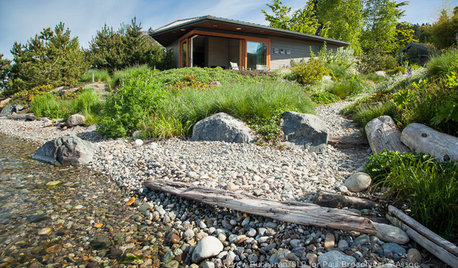Converting lawn to vegetable garden, suggestions.
linchat
15 years ago
Related Stories

GREAT HOME PROJECTSHow to Replace Your Lawn With a Garden
New project for a new year: Lose the turfgrass for energy savings, wildlife friendliness and lower maintenance
Full Story
FRONT YARD IDEASBefore and After: Front Lawn to Prairie Garden
How they did it: Homeowners create a plan, stick to it and keep the neighbors (and wildlife) in mind
Full Story
FARM YOUR YARD9 Ways to Change Up Your Vegetable Garden for the Coming Season
Try something new for edible plantings that are more productive than ever
Full Story
LANDSCAPE DESIGNCalifornia Says Goodbye to the Sprawling Ornamental Lawn
New state rules will effectively limit turfgrass to 25 percent of the landscape in most new and renovated yards
Full Story
EARTH DAYThe Case for Losing the Traditional Lawn
Work less, help the environment and foster connections by just saying no to typical turf
Full Story
LANDSCAPE DESIGNGet Along With Less Lawn — Ideas to Save Water and Effort
Ditch the mower and lower your water bill while creating a feast for the eyes with diverse plantings and gathering places
Full Story
FARM YOUR YARDAdvice on Canyon Farming From L.A.'s Vegetable Whisperer
See how a screened garden house and raised beds help an edible garden in a Los Angeles canyon thrive
Full Story
EDIBLE GARDENSGarden BFFs? Why Your Vegetables Are Begging for Companion Plants
Foster friendships among plants for protection from pests, pollination support and color camaraderie
Full Story
INSPIRING GARDENSLawn Gives Way to a More Natural Lakeside Garden
Meadow grasses, beach pebbles and driftwood replace turfgrass in a nature-friendly landscape on Lake Washington’s shore
Full Story
SAVING WATERHouzz Call: Are You Letting Go of Your Lawn?
Many facing a drought are swapping turf for less thirsty plantings. If you’re one of them, we’d like to hear about it
Full StoryMore Discussions









trinigemini
imagardener2
Related Professionals
Erie Landscape Architects & Landscape Designers · Hershey Landscape Architects & Landscape Designers · Bell Gardens Landscape Contractors · Cockeysville Landscape Contractors · Lakewood Landscape Contractors · New Cassel Landscape Contractors · Washington Landscape Contractors · Hueytown Landscape Contractors · Lincoln Decks, Patios & Outdoor Enclosures · Portage Decks, Patios & Outdoor Enclosures · Verde Village Decks, Patios & Outdoor Enclosures · North Hollywood Siding & Exteriors · Tooele Siding & Exteriors · West Hempstead Siding & Exteriors · Wilmington Siding & Exteriorstomncath
linchatOriginal Author
linchatOriginal Author
castorp
tomncath
natives_and_veggies
fishead199
imagardener2
johnmcd348
gatormomx2
pnbrown
karen_florida
pnbrown